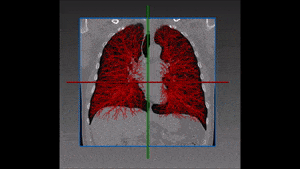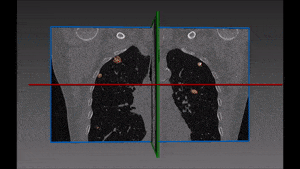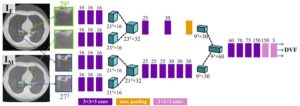Lung cancer is the most common cancer related mortality cause among men, and second in women worldwide. Primary lung cancer is usually divided into two groups: Non-Small Cell Lung Cancer (NSCLC), and Small Cell Lung Cancer (SCLC), the former being the most common. In cases that are diagnosed late, prognosis might be grim with high mortality rates. However, early diagnosis and treatment can improve outcome. The lung is also a common site for metastatic disease. Common primary tumors which spread to the lungs, include colorectal cancer, breast cancer, renal cancer, melanoma and head and neck cancers.
Lung tumors might appear in imaging as nodules (<3cm), or as masses (>3 cm). In order to identify the type of lung tumor, a biopsy is usually performed. Tissue sample can be obtained transbronchial via bronchoscopy, percutaneous guided by CT, thoracoscopically or via open biopsy. Usually after pathological confirmation of malignancy, the disease extent is classified according to the TNM classification of malignant tumors, and helps determine treatment protocol. A measure called Response Evaluation Criteria In Solid Tumors (RECIST) is used to evaluate treatment response.
Automated lung tumor segmentation
Lung tumor segmentation can assist in diagnosis, staging and follow-up, and can also be used by the physician during biopsy trajectory planning, surgery and image-guided ablation. Segmentation of tumors can be quite challenging, since their shape and size varies a lot. This means, that it is important to gather a large quantity of data to train the deep learning system and also that these data must be accurately annotated by a radiologist. In addition, distinguishing between tumor tissue and other lung findings such as pleural effusion, lymph nodes and consolidation can be difficult due to similar density. In order to deal with this challenge, RSIP Vision has built a proprietary neural network architecture that takes into account both global and local context of the tumor. This cutting edge AI module is today’s best solution for lung tumors segmentation. Contact RSIP Vision’s engineers to learn how.

 Pulmonology
Pulmonology




